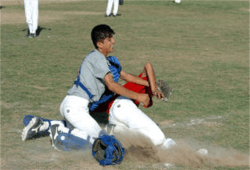Shoulder Dislocation in Kids 10 – 16

I read with great interest in the September issue of AJSM (link to full text) about acute anterior shoulder dislocations in children 10-16. That’s a group we don’t have much information about. Yes, the literature suggests that if you are younger than 20, you may have up to an 80-85% re-dislocation rate if you return to the activity that caused your dislocation and these types of dislocations may require shoulder dislocation surgery. But less than 20 was 17-19 in most studies looking at high school football, wrestling and hockey.
Well, fast forward to 2015 and young men and women…children….are playing all these sports very aggressively and frequently. They are bigger and faster than many of their forerunners who dabbled in these sports.
Leroux etal. ‘The Epidemiology of Primary Anterior Shoulder Dislocations in Patients Aged 10 to 16 Years” Vol. 43, No. 9 2015 pointed out that this younger group is not much different unless you’re really young.
 They looked at 1937 patients from 10-16 years that underwent closed reduction of a primary traumatic anterior shoulder dislocation with males comprising @80%. These children were followed for a minimum of 2 years and up to 10 to look at repeat closed reductions.
They looked at 1937 patients from 10-16 years that underwent closed reduction of a primary traumatic anterior shoulder dislocation with males comprising @80%. These children were followed for a minimum of 2 years and up to 10 to look at repeat closed reductions.
Primary closed reductions were highest in 16 year old males (164/100000) and the lowest rate was in the 10-12 year olds (5.9% of all dislocations). 38% of the patients had a repeated closed reduction after a median of .8 years. The rate of repeat closed reduction was age dependent with 14-16 year olds up to @42% and 10-13 year olds at up to @25%.
Being male is a problem for dislocations as we well know…more likely to be in collision sports. 14-16 year olds mirror the more adult 17-20 year olds but not at the 80-85% noted by some researchers. With each year of age, the chances for dislocation increase 20%. The younger folks are at less risk. Certainly the younger kids don’t hit and tackle or check at speeds and body mass of their older cohorts. Their connective tissue tends to be a bit more flexible at that age also….maybe the combination of these factors ‘protect’ the younger athlete from outright dislocations.
Females? They have a 20% less chance of a repeat closed reduction! Probably because of sport selection but I only speculate…that study hasn’t been done!

